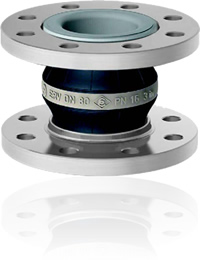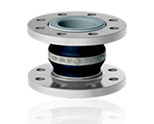Long service life guaranteeing high operational reliability
The rubber expansion joints impress with their compensating and damping material properties. Excessive force, arising within the pipeline, is deflected by rubber expansion joints before this can be passed on to adjacent components.
Our expertise, in designing and constructing rubber expansion joints, is reflected in their long service life and high operational reliability. This explains why most industrials are equipped with expansion joints.
The pipe connections are made of high-quality rubber. They are used in industrial environments and in plant and process engineering, as well as in food & beverage. Daily chemical, pharmacy, beer, in mechanical engineering, in the production of motors and the construction of industrial equipment, and even in shipbuilding, they have also found their way into building services engineering, environmental engineering and hydraulics.
What rubber expansion joints do:
→ Damp oscillation, noise and vibration

→ Compensate motion
→ Compensate expansion caused by differences in temperature
→ Reduce tension
→ Compensate ground and foundation settling
→ Compensate imprecise assembly
→ Serve as assembly and disassembly aids
→ Provide an elastic wall seal for penetration assemblies
→ Compensate pipeline movements aboard ships
→ FDA conform for sanitary industrial
Difference between expansion joints on the basis of movements
Universal rubber expansion joints
Structure: Rubber bellows with adapters
Lateral rubber expansion joints
Structure: Rubber bellows with lateral motion tensioning system and flanges.
Angular rubber expansion joints
Structure: Rubber bellows with tie bar and flanges. The centre of rotation, of the tie bar, is located in the centre of the bellows.
Technical Data
Bellows materials: EPDM, CIIR (Butyl), NBR (Perbunan), CR (Neoprene)
Flange materials: Ductile Iron, Cast Iron, Cast Steel, Stainless Steel, All Kind of Materials Customize
Available Size and pressure: Nominal width: DN 20 – 3600
Pressure: PN 0.7 – 25 Bar
Connection: Flange or threaded


